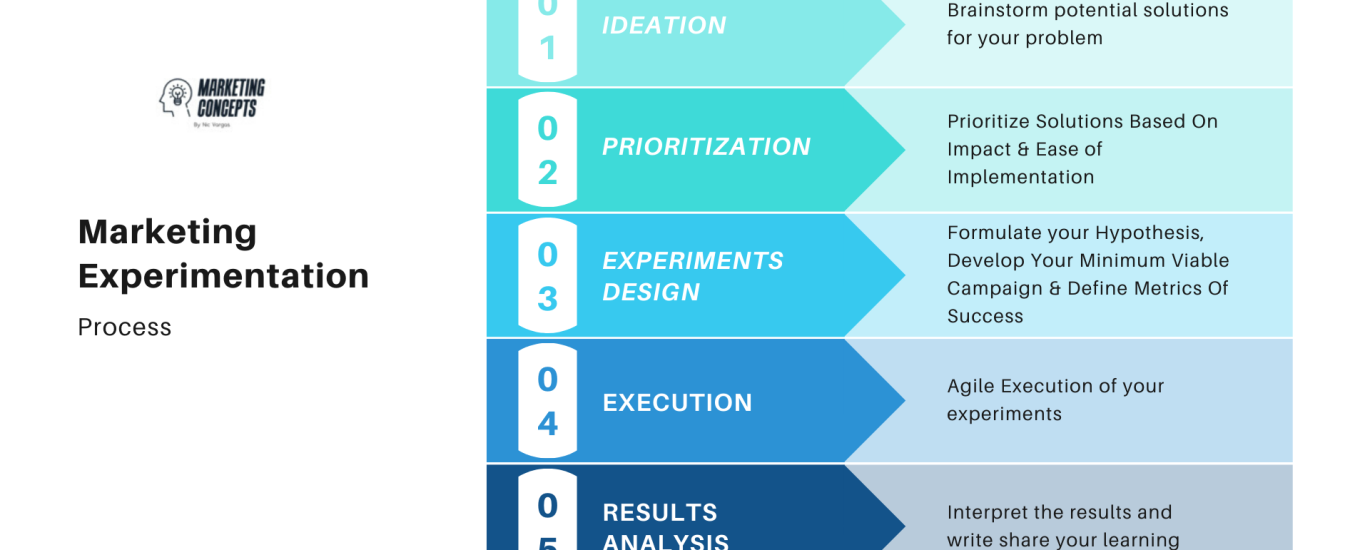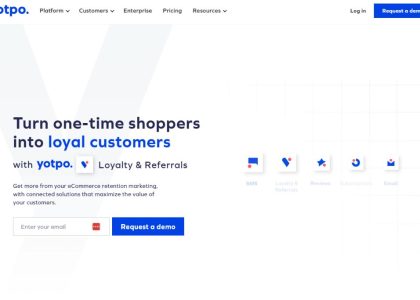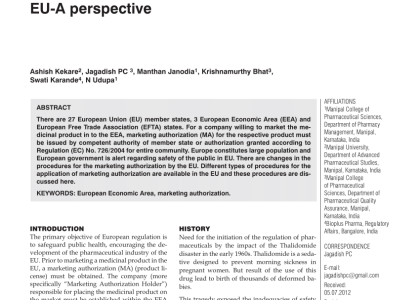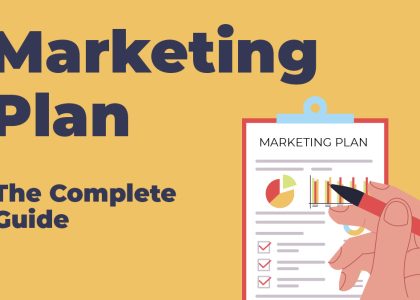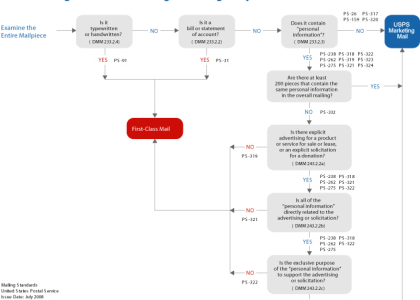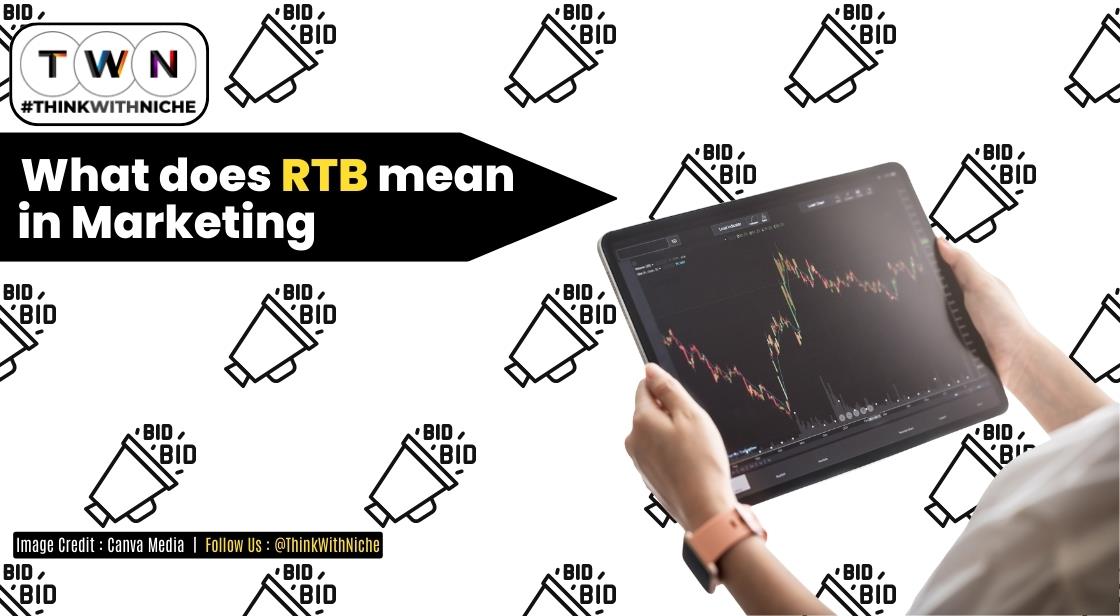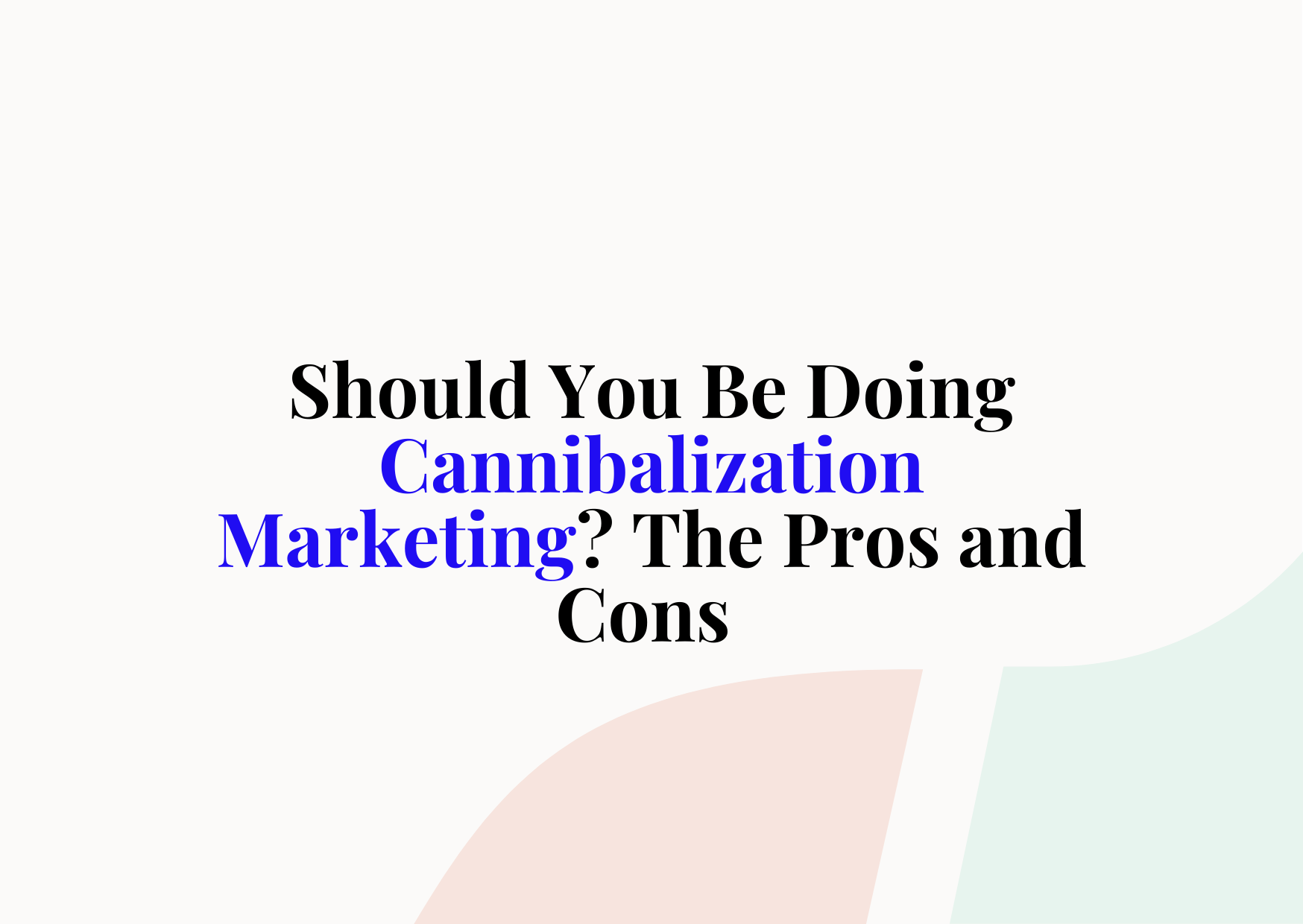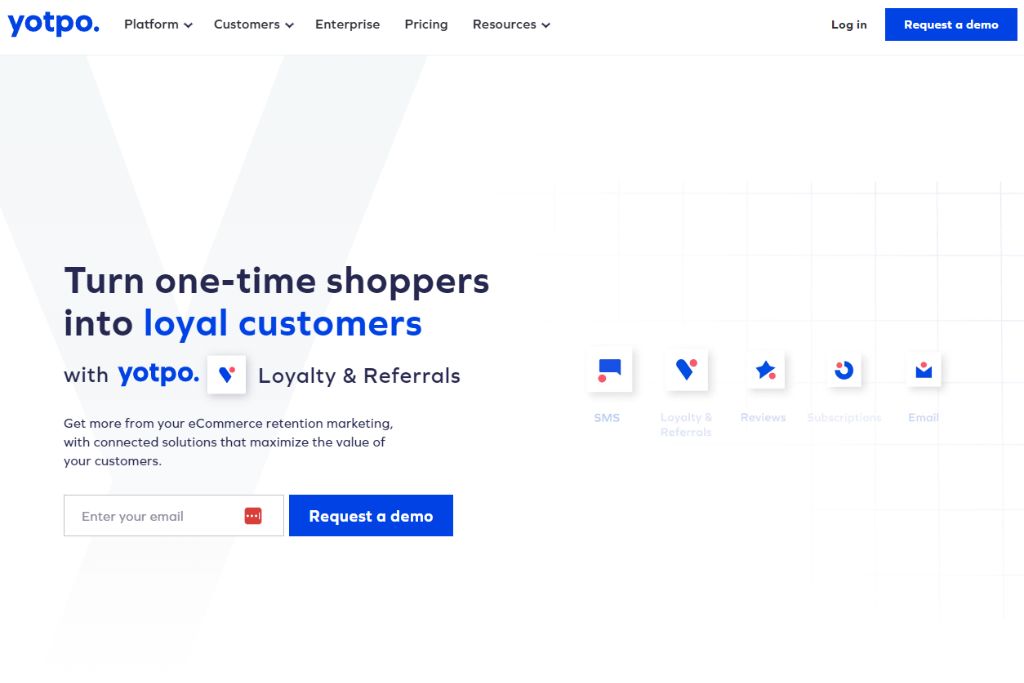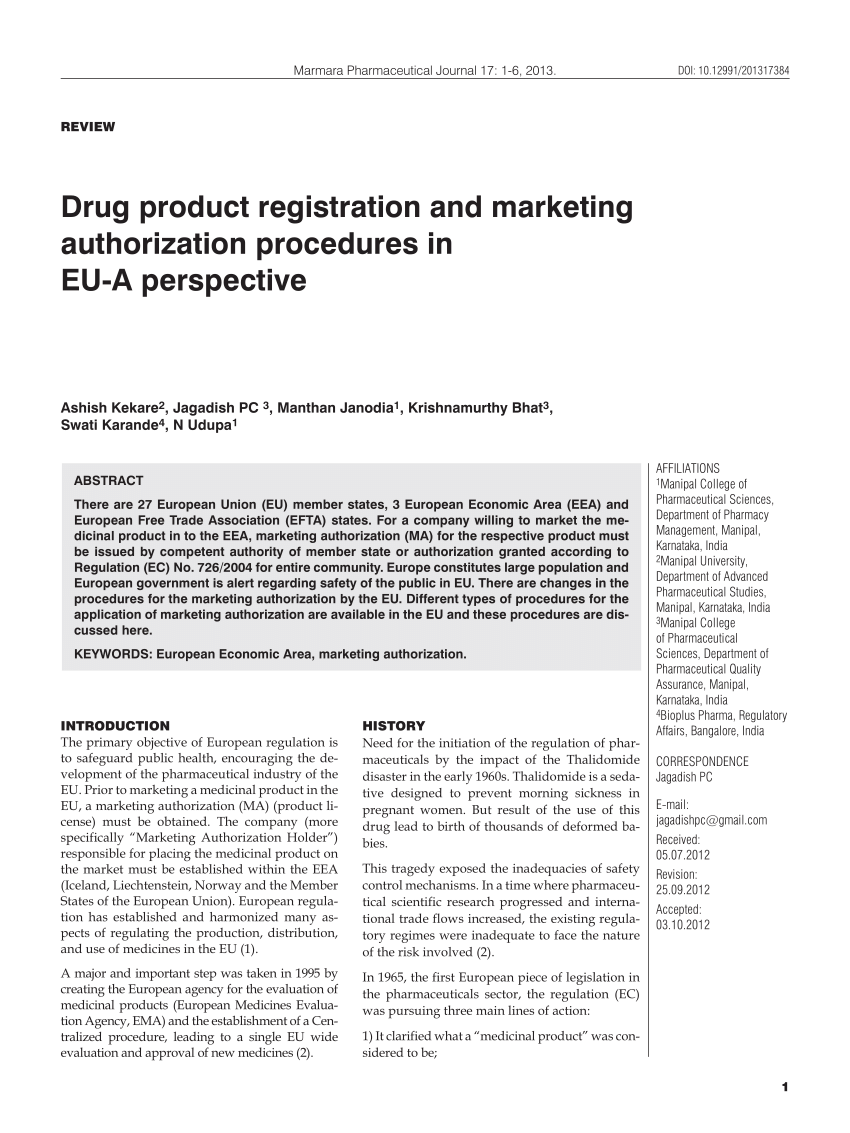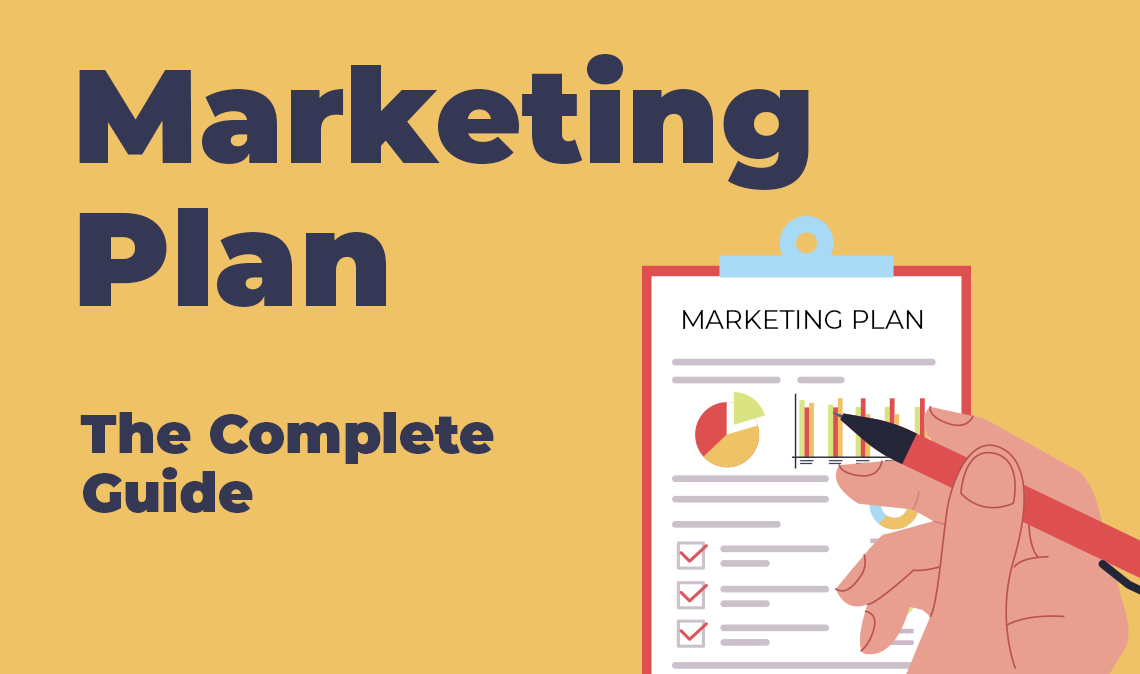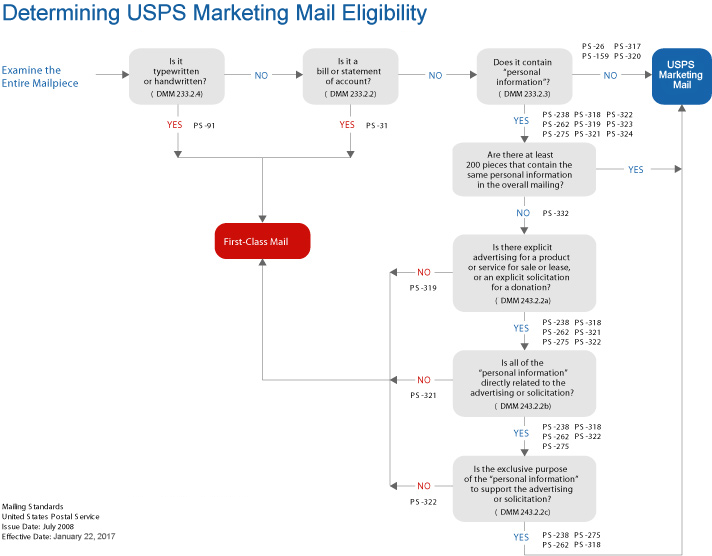As companies and businesses compete for visibility and customer engagement in the increasingly digital world, the understanding of marketing experiments becomes indispensable. This article offers a comprehensive exploration into this intriguing and complex domain, projected as your ultimate reference manual.
In truth, marketing experiments represent the scientific aspect of the industry. They involve devising hypotheses, testing those propositions through controlled procedures, and consequently assessing the results to optimize marketing strategies. These trials are instrumental in comprehending how changes in marketing tactics and approaches impact crucial variables like product recognition, customer behavior, and brand loyalty, among others.
Whether you’re a seasoned marketer, beginner, or entrepreneur looking to navigate the landscape of business advertising and promotion, gaining deeper insights into marketing experiments can significantly elevate your potential of success. This guide aims to equip you with a robust theoretical framework and practical knowledge to design, execute, and analyze such experiments effectively.
Join us as we delve into the world of marketing trials, illuminating their importance, explaining the best practices, and addressing common challenges. Welcome to your ultimate guide to understanding the vital science behind cutting-edge marketing strategies, thus helping you make informed decisions and grow your business.
Understanding the Significance and Function of Tests in Marketing
Diving into the realm of marketing without any form of experiment could be equated to navigating an uncharted territory blindly. Thus, the adoption of marketing tests holds paramount importance. Akin to scientific experiments, marketing tests involve hypotheses creation, testing, results analysis, and drawing conclusions to make informed decisions regarding marketing strategies.
The Critical Significance of Marketing Tests
One of the chief reasons why marketing tests are crucial is that they facilitate the assessment and validation of marketing strategies before a full-scale implementation. This validation step can prevent wastage of resources on ineffective strategies. Moreover, these tests provide valuable insights into customer behaviour, preferences, and interests, thereby enabling marketers to create personalized and tailored messages or offers to a targeted audience.
Benefits of marketing experiments
- The ability to analyze various marketing elements such as price points, brand names, advertisements designs, etc.
- Great value in mitigating risks associated with erroneous marketing decisions.
- They can enhance ROI by ensuring resources are utilized on profitable marketing initiatives.
Role of Marketing Tests
Marketing tests essentially serve as a roadmap guiding businesses in their marketing endeavors. By evaluating the feedback and response from a smaller audience test group, companies can gauge what works best for their target demographic. This study ideally aids the creation of effective marketing plans, assesses market opportunities, and measures the potential return on investment. Another eminent role of marketing tests is to facilitate continuous improvements through regular feedback. They foster innovation as companies continually test and adapt their strategies to rapidly shifting markets and consumer preferences.
Therefore, the potency of marketing experiments cannot be underestimated, with their purpose stretching beyond mere product or service launch. They ultimately strive to cultivate a deeper understanding of the market landscape, consumer behavior, and the efficiency of various marketing strategies. As such, they serve as a pivotal contributor to a company’s growth and success.
Understanding Important Data Points in Advertising Tests
For efficient and successful marketing trials, identifying the right metrics to track and analyze is crucial. These important data points serve as the navigator, guiding marketers to make informed decisions and strategies.
Conversion Rate: This measure, denoted as a percentage, indicates the number of site visitors who have completed a desired action – be it a purchase, sign up for newsletters, or download an app. Essentially, it offers vital insights into how effectively marketing efforts are prompting customer action.
Customer Acquisition Cost (CAC): This metric is decisive in understanding the efficiency of marketing strategies. It involves calculating the total marketing expenditure over a particular period and dividing the result by the number of new customers gained within the same timeframe.
Revenue: Revenue is a primary measure of success. However, the revenue generated from new customers—often referred to as ‘incremental revenue’ can offer fruitful insights. It helps in understanding the direct impact of marketing campaigns on increasing customer-base and profit margins.
Customer Lifetime Value (CLV): This measures the total revenue a business can reasonably expect from a single customer account. It considers a customer’s revenue value, and compares that number to the company’s predicted customer lifespan. Businesses use this to identify significant customer segments that are the most valuable to the company.
Retention Rate: A higher retention rate means more customers are returning to your brand, indicative of a positive customer experience and successful marketing initiatives. Not only does it measure customer loyalty, but in the long run, customer retention also contributes largely to profitability.
- Bounce Rate: Bounce rate is a crucial metric to track visitor behavior. It reflects the percentage of customers who navigate away from the website after only viewing a single page. This metric can help businesses recognize areas for improvement on their site.
- Net Promoter Score (NPS): This index ranging from -100 to 100 measures the willingness of customers to recommend a company’s products or services to others. It is utilized as a proxy for gauging the customer’s overall satisfaction with a company’s product or service and the customer’s loyalty to the brand.
A Look at the Various Forms of Marketing Experimentation and What They Entail
Marketing experiments come in different forms, each designed to test and measure the effectiveness of a certain marketing approach or strategy. Exploring these various methods, it’s vital to understand what they are, how they perform, and what they demand.
Different Sorts of Marketing Experiments
Marketing experiments often take the shape of A/B testing, multivariate testing and split testing.
A/B testing involves tweaking a single element of a marketing strategy in an effort to see which option performs best. This type of test offers a way to compare two versions of a single variable to discover which one is more successful. For instance, the color of a call-to-action button on an e-commerce website might be manipulated for an A/B test.
Multivariate testing, on the other hand, alters numerous variables at once. This helps to understand how different combinations of changes can influence customer behavior.
Lastly, split testing is a notably bigger venture, in which two entirely different designs or marketing strategies are compared.
What Do These Experiments Demand?
Implementing these experiments necessitates careful planning and preparation. Above all, you need to have a clear objective or hypothesis that you want to test. This could revolve around improving click-through rates, increasing product conversions, or enhancing user time spent on a web page.
Moreover, you would require a sufficient volume of data to attain meaningful results. This implies having enough users to participate in the experiment and enough time to run it. An A/B test on a small number of users over a short period is unlikely to yield reliable results. Furthermore, the longer the experiment runs, the more confidently you can derive conclusions from the data.
Lastly, you need the necessary tools to run the experiment and analyze the outcomes. There are several online platforms today that can help manage these experiments and provide insightful results.
Strategies for Successful Marketing Experiment
The successful execution of a marketing experiment is undoubtedly a mix of art and science. The objective is to decipher consumers’ behaviors, needs, and preferences and then tailor your product or service in a way that meets their demand, thereby increasing its appeal, adoption, and usage. Here are some steps to design an influential marketing experiment.
Clearly Stating the Hypothesis
The initial phase in any experiment is to outline a clear hypothesis. A hypothesis is essentially an educated prediction about what will happen during the experiment. For this purpose, it is necessary to define the exact adjustments you want to make in your marketing efforts and guess how these changes will affect the consumer behavior.
Setting Measurable Goals
The second important stage involves formulating measurable and quantifiable goals. These goals could be boosting website traffic by a particular percentage, increasing lead generation by a specific amount, or augmenting conversion rates. Setting measurable goals will help you to gauge the success of your experiment precisely.
Choosing the Right Sample Size
The selection of the correct sample size is critical. A small sample size may result in inaccurate results, while an excessively large one might be costly and hard to manage. By using statistical tools and techniques, you can determine a suitable sample size that gives reliable results and is cost-effective.
Implementing the Experiment
This phase entails implementing the marketing modifications outlined in the hypothesis. This could mean tweaking your website design, revising content, altering product pricing, or changing any other variable that may influence customer behavior in desired ways.
Monitoring and Recording Results
The next step is database management. Close monitoring of the experiment and proper recording of data is significant. Accurate data collected during the experiment helps in the in-depth analysis and gives valid insights.
Statistical Analysis
Once the data is recorded, the next step is to perform statistical analysis to determine whether the changes made had a significant effect. This can involve using statistical tools to analyze data and extract actionable insights.
Make Necessary Adjustments
Depending on the insights gleaned from the data, you might need to make necessary adjustments. Keep in mind that not every test will be successful- there will likely be failures, and that’s okay. Use these lessons to refine your approach for your next experiment.
In summary, marketing experiments require a systematic approach using statistical tools and an understanding of consumer behaviour. Possessing the ability to run effective marketing experiments can significantly improve your marketing initiatives and give you the edge over your competitors.
Identifying Potential Pitfalls in the Process of Implementing Marketing Trials
Marketing experiments, when done correctly, can be a mightily powerful tool for driving business growth. Yet, it’s shockingly easy to stumble when conducting these trials. The following are a few missteps that are not uncommon among marketers attempting to execute effective experiments.
Failure to Define Clear, Measurable Goals
The inception point of a marketing experiment typically involves setting goals. One frequent error marketing professionals make is failing to define clear, measurable objectives. When the goals are vague or immeasurable, it distorts the experiment’s clarity, making it challenging to assess progress and understand the results. Therefore, narrowing down to specific, quantifiable outcomes improves the experiment’s validity.
Implementing Multiple Changes Simultaneously
Another error that tends to surface during marketing experiments is implementing multiple changes at once. When numerous variations are introduced simultaneously, it becomes nearly impossible to pinpoint which modification incited the observed changes. To maintain control over the experiment, it’s usually preferable to tweak one aspect at a time, allowing for accurate identification of successful alterations.
Ignoring Statistical Relevance and Validity
Many marketers overlook the importance of statistical relevance when conducting experiments. They might jump to conclusions based on a handful of data or on results obtained within a too short time. Inadequately collected or considered data may lead to erroneous conclusions. Therefore, running the experiment long enough to accumulate sufficient data and securing statistical validity before concluding is critical.
- Overlooking the Significance of External Factors
- Poor Planning and Execution
External factors can seriously skew the results of a marketing experiment. Factors such as seasonal demand, market trends, or even a global pandemic, can greatly impact the experiment’s outcomes. Inadequate planning and poor execution can also lead to flawed results. Marketers must meticulously plan and carefully execute each step of the experiment to minimize errors.
- Failing to Re-test
- Forgetting to Document the Process
Lastly, another common mistake is not re-testing successful experiments. One-time success doesn’t guarantee repeated results. Re-testing ensures consistency and reliability of outcomes. Besides, documenting every step of the process, as well as the results, for future reference often slips marketers’ minds, leading to knowledge gaps in the long run.
Things to Keep in Mind Before Starting a Marketing Trial
With the era of data-driven decision making in business, marketing trials have become an essential tool. To ensure the success of a marketing experiment, careful planning and clear goal setting are necessary. The following are key aspects to address before launching a marketing trial.
Define Your Goals
Before embarking on a marketing trial, the first step is to clearly define the goals you want to achieve. This could range from increasing website traffic, to improving email open rates or boosting product sales. Having a clear goal not only guides the entire experiment planning process but allows for accurate measurement of success.
Understand Your Audience
Understanding the demographics and behavior of your target audience is crucial in designing a successful marketing experiment. This involves a detailed study of your customers, their buying behavior, preferences, and needs. Thorough audience research can systematically guide the requisite variables of your experiment and ensure maximum ROI.
Pick the Right Variables
Identifying variables to manipulate in an experiment plays an important role in obtaining meaningful outcomes. Variables should be selected keeping in mind the overarching goals of the experiment, and how changes in each variable may likely affect the desired outcome.
Measure Performance
Clearly defining performance metrics is another prerequisite. Determine what you will measure, and identify the tools you will use to do so. You should have a clear idea of how your metrics will reflect the success or lack thereof, of your marketing experiment.
Plan for Experiment Analysis
For any successful experiment, meticulous planning of the data analysis process is crucial. It is important to know what kind of statistical analysis you will perform, what the criteria for success are, and how you will interpret the results of your marketing experiment.
In conclusion, quality preparation delivers quality results. By taking these factors into consideration, you will be well on your way to designing and implementing a successful marketing experiment.
Setting Goals for Your Experimental Marketing System
For an effective deployment of marketing tests, one of the critical first steps to take is defining the purpose you are hoping to achieve. Creating goals for your market exploration process is significant to the success of your marketing experiment.
Having set purposes will guide your strategy, help you measure your progress precisely, and provide you with a clear direction. To state your objectives, you need to ask yourself the question: “What insight do I hope to gain from this experimentation?”
Steps in Creating Goals for your Experimental Marketing Strategy
- Identify the marketing problem: This involves analyzing the current state of your marketing strategy and identifying areas where improvements are needed. You need to have a clear understanding of the issues that your business is facing marketing-wise.
- Formulate a hypothesis: After identifying the problem, make an educated guess on how to solve it. This hypothesis will guide the design of your experiment.
- Define your metrics: You should decide on what success looks like for your experiment. In other words, you should identify key performance indicators (KPIs) that would measure the success or failure of your experiment.
- Implement and analyze: Once you have defined your metrics and designed your experiment, the next step is to conduct it and then analyze the results. The results should provide you with an insight into whether your hypothesis was correct or not.
Regardless of the outcome of your marketing experiment, understanding how to establish objectives for your analysis and interpreting your results will help optimize your marketing strategies, leading to a better understanding of your audience, improved marketing tactics and ultimately, increased conversion rates.
Deciphering and Drawing Conclusions from Outcomes of Promotional Trials
The analysis and interpretation of promotional trial results is a crucial step in leveraging data-driven marketing decisions. By meticulously examining the data obtained from marketing experiments, companies can gain significant insights, identify specific patterns, and consequently, streamline their marketing strategies.
Preliminary understanding and analysis of data is the first step. Businesses need to acknowledge every single data point collected from the experiment and ensure its validity before proceeding with data analysis. Manipulation or cherry-picking of data for desirable results must be strictly avoided.
Interpretation follows the proper analysis of data. This process includes drawing conclusions from the data collected, determining possible reasons for specific outcomes, and hypothesizing strategic marketing techniques based on the results.
Steps for Effective Analysis and Interpretation
- Data Cleaning: This step involves the elimination of outliers and invalid data.
- Data Visualization: To understand data better, it often helps to represent it graphically.
- Statistical Analysis: Here, marketers apply statistical techniques to draw significant conclusions.
- Result Interpretation: After analyzing, decisions are made based on the conclusions drawn.
In the interpretation phase, marketers should be cautious not to get misled by apparent correlations without establishing causation. The statistical phenomenon of ‘Simpson’s paradox,’ where a trend appears in different groups of data but disappears or reverses when these groups are combined, must be accurately acknowledged during interpretation.
Summing up, the ability to accurately analyze and interpret marketing experiment results can tremendously impact a company’s long-term success and deliver a higher return on their marketing investments.
Exploring Real-World Instances of Experiments in Marketing
Diving deep into actual instances of marketing experiments can offer valuable insights. These studies can provide a clear understanding of how strategic tweaks can substantially impact marketing outcomes. Let’s explore a few case studies that give a sense of the possible experiment scenarios in the field of marketing.
1. E-commerce Company A/B Testing Email Marketing Campaigns
A well-known e-commerce company wanted to optimize its email marketing campaign. The goal was to increase conversion rates. The company decided on an A/B testing approach. In this experiment, they divided their subscriber base into two groups, one received an email with long detailed content (type A), the other with brief but engaging content (type B). Various metrics such as open rate, click-through rate, and conversion rate were tracked for both types of emails.
2. Online Service Provider Testing User Interface
A popular online service provider aimed to improve its user interface (UI) to enhance user experience and engagement. They ran an experiment with two UI versions: the current (version A) and a new prototype (version B). Users were randomly assigned to interact with either interface. The provider analyzed engagement metrics like session duration, pages per visit, bounce rate, to evaluate the performance of both UI versions.
3. Retail Brand Experimenting with Pricing Strategies
A renowned retail brand wanted to assess the impact of different pricing strategies on their product sales. They experimented by offering an assortment of discounts on one product and a buy-one-get-one-free offer on another product. They then compared the performance of both pricing strategies by tracking product sales and overall revenue, providing valuable insights into their pricing strategy.
Each of these case studies shows how marketing experiments can deliver critical insights to drive business growth. Given the dynamic nature of digital marketing, continuous experimentation and optimization based on data-driven insights are the keys to success.
Gaining Better Marketing Approaches Through Experiment Outcomes
The outcomes of marketing experiments can serve as crucial cornerstones on which businesses can refine and redefine their marketing strategies. These results, when correctly analysed and interpreted, can reveal hidden trends and audience behaviours that can guide the development of more effective, results-driven marketing strategies.
An important aspect of using experiment results to boost the effectiveness of marketing strategies is the adoption of A/B testing. Simply put, A/B testing refers to the comparison of two different versions of a marketing element – such as email subject lines, call-to-action (CTA) buttons, or landing pages – to determine which one performs better.
For instance, by simply changing the color and text of a CTA button, a business might discover that one version attracts more clicks than another. This process of continuous testing, learning, and refining is central to evolving a marketing strategy that lands well on the target audience.
- Data-Driven Insights: Experiment results provide valuable insights into customer behaviour. This way, businesses can move away from notions based purely on assumptions and employ strategies grounded in actual data.
- Increased Engagement: Learning through experiment results can lead to better understanding of what resonates with the audience, hence, leading to improved engagement rates.
- Better Conversion Rates: Experiment results can provide insights about what works and what doesn’t in terms of marketing tactics. Employing the winners of such tests in the overall strategy can lead to higher conversion rates.
In conclusion, analyzing marketing experiment outcomes can help businesses optimize their marketing strategy and achieve better ROI. By continually putting their assumptions to the test, businesses are better equipped to develop marketing strategies that deliver desired results.
Anticipated Developments in the Field of Marketing Trials
In the changing landscape of marketing strategies, upcoming trends in marketing trials promise to revolutionize the way businesses reach, engage, and convert consumers. As technology advances and consumer behavior evolves, identifying these trends can help businesses stay ahead and remain competitive.
Increasing Use of Artificial Intelligence
One significant trend is the surging use of Artificial Intelligence (AI) in marketing trials. Through machine learning algorithms and predictive analytics, AI can analyze large amounts of data to provide valuable insights. It can aid businesses in making informed decisions and optimizing their advertising campaigns based on customer behavior patterns.
Besides, AI can carry out A/B testing efficiently, by running numerous trials simultaneously and identifying successful strategies quicker than manual approaches. This not only enhances accuracy but also saves businesses valuable time and resources.
The Evolution of Virtual Reality
Another anticipated trend is the evolution of Virtual Reality (VR) and its implications for marketing experiments. VR has the potential to transform the way markets function, as businesses can create immersive marketing experiences for consumers.
Through VR, businesses can conduct marketing experiments that simulate real-world situations, helping them to better understand how consumers might interact with their products or services in various scenarios.
The Rise of Personalization
The future of marketing trials also indicates a rise in personalization. As information about individual consumer’s preferences and behaviors becomes increasingly available, businesses are turning to personalized marketing strategies to engage their target audience.
By testing different personalized marketing approaches, businesses can identify what resonates most with their audience and increase their chances of conversion. This shift towards personalization reflect the evolving demands of consumers for highly curated experiences.
- Artificial Intelligence (AI) – Enhancing efficiency and accuracy in marketing trials through machine learning and predictive analytics.
- Virtual Reality (VR) – Transforming marketing experiments by creating immersive, real-world simulations.
- Personalization – Responding to consumer demand for curated experiences through personalized marketing strategies.
FAQ: What is a marketing experiment?
How can market research help in planning a marketing experiment?
Market research helps in planning a marketing experiment by providing insights into potential customers’ preferences, behaviors, and needs. This information is crucial to design experiments that are relevant and targeted.
What steps should a marketing team take to conduct a marketing experiment?
To conduct a marketing experiment, a marketing team should identify the objective, choose the type of experiment, define the target audience, run the experiment with different marketing messages or tactics, and then analyze the results to see which one yields the best results.
What types of marketing experiments can a business run to test different marketing strategies?
Types of marketing experiments a business can run include A/B testing different marketing messages, experimenting with various content marketing approaches, trying out new marketing channels, and using marketing automation tools to test the effectiveness of different campaigns.
How can running marketing experiments help you determine the effectiveness of your marketing strategy?
Running marketing experiments can help determine the effectiveness of your marketing strategy by providing empirical data on what resonates with the audience. The results of the experiment offer valuable insights to refine future marketing strategies.
What are some common marketing experiments that companies use to boost their marketing effectiveness?
Common marketing experiments include A/B testing of email campaigns, social media content variations, different landing page designs, pricing strategies, and promotional offers to identify the most effective marketing messages and approaches.
Why are experiments important in the process of developing new marketing tactics?
Experiments are important in developing new marketing tactics as they allow marketers to test and validate ideas in a controlled environment, ensuring that future marketing efforts are based on proven methods and not just assumptions.
How can businesses use marketing experiments to maximize their marketing budget?
Businesses can use marketing experiments to maximize their marketing budget by identifying the most cost-effective and impactful strategies. This ensures that resources are allocated to tactics that offer the highest return on investment.
What can marketers learn from the results of a marketing experiment?
Marketers can learn valuable lessons from the results of a marketing experiment, including which messages resonate with their audience, the most effective channels for communication, and insights into consumer behavior that can be used to inform future experiments.
How can content marketing benefit from experimentation?
Content marketing can benefit from experimentation by testing different types of content, formats, distribution channels, and messaging to see what engages the audience most effectively, thereby improving the overall content strategy.
In what ways do marketing experiments help refine your marketing strategies?
Marketing experiments help refine marketing strategies by providing empirical evidence on what works and what doesn’t. This feedback loop is essential for continuous improvement and ensuring that marketing efforts are always aligned with consumer preferences and market trends.
What are the benefits of running experiments to target potential customers in marketing?
Running experiments to target potential customers allows marketers to test different approaches and understand customer preferences better. This can lead to more effective and personalized marketing strategies, improving engagement and conversion rates.
What is the primary goal when you run a marketing experiment?
The primary goal of running a marketing experiment is to test specific marketing hypotheses or strategies, such as messaging effectiveness or channel efficiency, to determine what resonates best with your audience and improves marketing success.
What might a marketing team learn from an experiment that did not yield the expected results?
From an experiment that did not yield expected results, a marketing team can learn valuable lessons about their audience’s preferences, the effectiveness of their messaging, or the suitability of the marketing channels used. This can inform future strategy adjustments.
Can you give some examples of marketing experiments that companies often conduct?
Examples of marketing experiments that companies often conduct include A/B testing email subject lines, trialing different social media ad formats, experimenting with landing page designs, and testing pricing strategies to see which yields the best results.
How can results from a marketing experiment boost your marketing efforts?
Results from a marketing experiment can boost your marketing efforts by providing data-driven insights that help refine marketing strategies, ensuring that your marketing resonates with your target audience and maximizes ROI.
What are some creative experiment ideas for testing your marketing strategies?
Creative experiment ideas for testing marketing strategies include varying the tone of your content, using different visual elements in ads, experimenting with interactive elements on your website, and trialing new platforms or media for your campaigns.
How do experiments allow businesses to improve their marketing tactics?
Experiments allow businesses to improve their marketing tactics by testing different approaches and learning from the outcomes. This process of trial and error helps identify the most effective strategies tailored to the business’s specific marketing goals.
Why is it crucial to remember that marketing experimentation is an ongoing process?
It’s crucial to remember that marketing experimentation is an ongoing process because consumer behaviors and market trends constantly evolve. Continuous experimentation ensures that marketing strategies remain effective and relevant over time.
What should a business aim to learn from every marketing experiment it conducts?
From every marketing experiment, a business should aim to learn about the preferences and behaviors of their target audience, the effectiveness of specific marketing tactics, and insights into potential improvements for future campaigns.
How can the results of a marketing experiment influence future marketing experiments?
The results of a marketing experiment can influence future marketing experiments by providing data and insights that shape new hypotheses and test scenarios. Learning from past experiments helps refine the experimentation process and guides the development of more targeted and effective future experiments.

